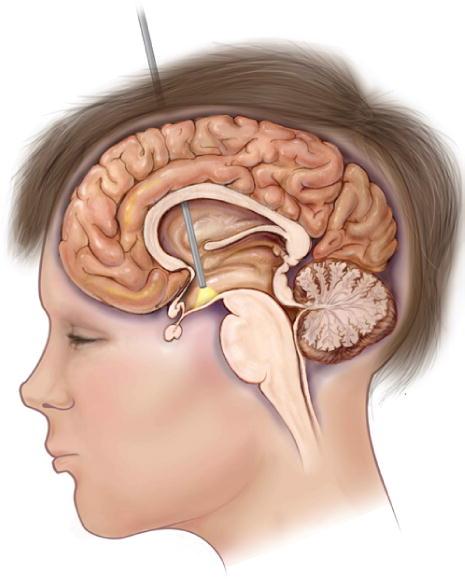Ventriculostomy: A Comprehensive Guide to Cerebrospinal Fluid Drainage
Explore the significance of ventriculostomy, a surgical procedure for draining cerebrospinal fluid (CSF) from the brain's ventricles. Learn about its uses, benefits, risks, and recovery process.
Introduction
Ventriculostomy is a surgical procedure designed to drain excess cerebrospinal fluid (CSF) from the brain's ventricles. This comprehensive guide will provide you with an in-depth understanding of ventriculostomy, its uses, benefits, associated risks, and the recovery process.

What is Ventriculostomy?
Ventriculostomy is a neurosurgical procedure used to alleviate intracranial pressure caused by excessive accumulation of cerebrospinal fluid. The ventricles in the brain are interconnected cavities filled with CSF, which acts as a protective cushion. However, when the production or absorption of CSF becomes impaired, it can lead to dangerous pressure buildup. Ventriculostomy provides a solution by creating a temporary or permanent drainage system to remove excess CSF.
Uses of Ventriculostomy
Hydrocephalus: The most common indication for ventriculostomy is hydrocephalus, a condition characterized by the abnormal accumulation of CSF in the ventricles. Ventriculostomy offers an effective method to relieve the pressure and manage the symptoms associated with this condition. Traumatic Brain Injury: In cases of severe head trauma, ventriculostomy may be employed to monitor and control intracranial pressure. It allows for accurate measurement of CSF pressure and facilitates the removal of excess fluid. Brain Tumors: Ventriculostomy can aid in the management of brain tumors by reducing the pressure caused by the tumor mass and facilitating the flow of CSF.
Benefits and Risks of Ventriculostomy
Benefits:
Effectively reduces intracranial pressure, preventing potential brain damage. Allows for continuous monitoring of CSF pressure. Provides a means to administer medications directly into the ventricles. Offers a less invasive alternative to other surgical procedures.
Risks:
Infection: Any surgical procedure carries a risk of infection. Strict aseptic techniques are employed to minimize this risk. Bleeding: There is a possibility of bleeding during or after the procedure, which may require additional medical intervention. Damage to brain tissue or blood vessels: While rare, ventriculostomy carries a minimal risk of damaging surrounding brain tissue or blood vessels. Malfunction or blockage: The ventricular catheter or drainage system may become blocked or malfunction, necessitating further medical attention.
The Ventriculostomy Recovery Process
After the ventriculostomy procedure, patients are closely monitored in the hospital's intensive care unit. The recovery process may involve pain management, antibiotic administration to prevent infection, and monitoring of vital signs and CSF drainage. Rehabilitation, including physical and occupational therapy, may be recommended to aid in the patient's recovery and regain any lost abilities.
Conclusion
Ventriculostomy is a valuable surgical procedure for managing conditions that involve excessive CSF accumulation and elevated intracranial pressure. Understanding its uses, benefits, risks, and recovery process is crucial for patients and their families. By providing an effective means of CSF drainage, ventriculostomy plays a significant role in promoting neurological well-being and enhancing patient outcomes.
We are associated with experienced and highly skilled medical professionals. We use the latest medical technology available in the world and we provide medical services in collaboration with JCI & NABH Certified hospitals only. Our services include various types of treatment and organ restructuring and transplant.
